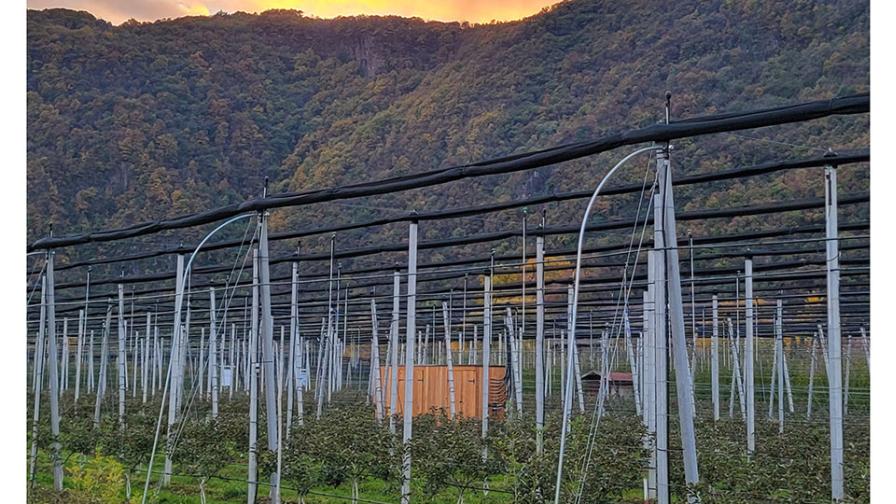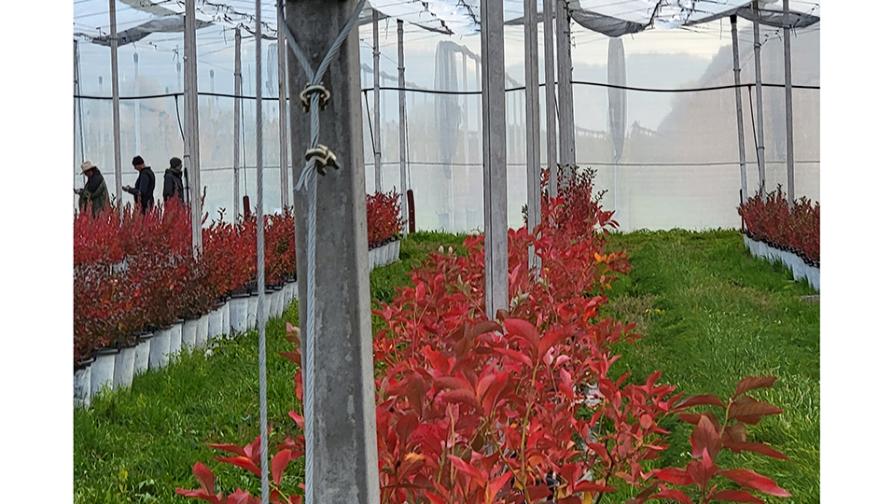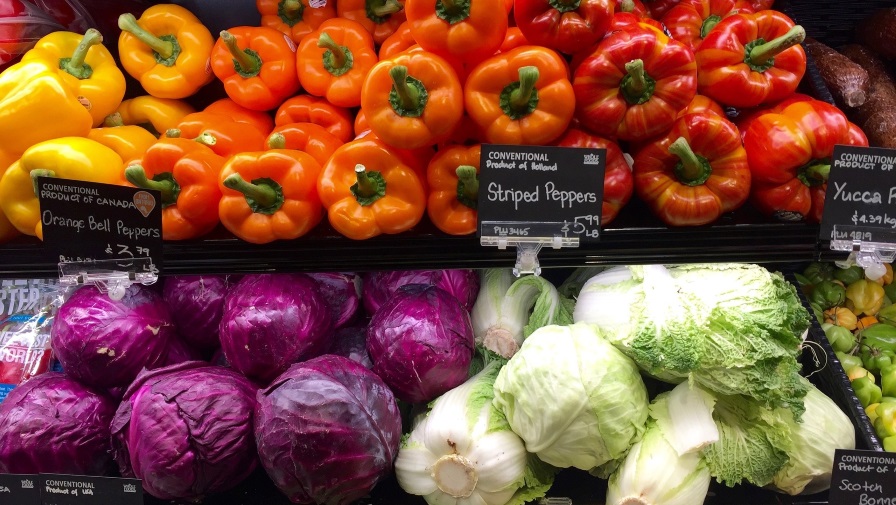Why There’s Much to Learn from Italian Fruit Growers’ Rock-Solid Approach

When it comes to orchard and vineyard infrastructure, Italian growers take a rock-solid approach. Concrete posts, like these seen as the sun sets over the Laimburg Research Center in Northern Italy, were envied by the U.S. growers on the IFTA tour who are tired of using wood posts, which don’t last as long.
Photo by David Eddy
Pruning and training vineyards and orchards are absolutely critical to getting the proper yields of quality grapes and tree fruit. But if you don’t start with the right infrastructure, it can all be for naught.
Several growers on the International Fruit Tree Association tour of Northern Italy said they had seen cases of entire orchard blocks losing as much as half their yields in recent years when whipping winds blew over orchard blocks laden with beautiful fruit just prior to harvest.
Wood posts are the standard in the U.S., but in Italy they were tough to find, no matter what the fruit crop. If the crop requires hail and rain netting, as many of the country’s crops do, concrete posts are the rule.
The problem with wood posts is that they don’t last nearly as long. Tom Auvil, a grower who also spent 16 years working for the Washington Tree Fruit Research Commission, says he has seen wood posts rot in as little as seven years, and having to replace them after 10 years is not particularly unusual.
Unlike wood, concrete posts can last a long time. Italian growers report that when an orchard needs pulling because the variety has fallen out of favor, or simply was so old it ceased being productive, the concrete posts are left in place for the new orchard planting.
Auvil, who retired not long ago after working for Agromillora Nursery, says the Italian growers have it so much better than their U.S. counterparts.
“Concrete posts here are one-third the cost of our wood posts,” he says. “Also, wood doesn’t last as long, and currently can take years to get.”
Auvil says he’s not certain of the precise reasons for the wide cost disparity, but like other growers on the tour at Interpoma, the large apple trade show in Bolzano, he was keenly interested in the Italian products. In the past, U.S. growers went so far as to import the heavy concrete posts from Italy, but shipping costs have soared so much in recent years, it’s become cost prohibitive.

Wood posts were virtually nowhere to be seen in Italy, even those used in covering these soft fruits at the Laimburg Research Center.
Photo by David Eddy
Several companies at Interpoma were not merely selling concrete posts but systems for manufacturing them. Several growers on the tour even went so far as to consult with the companies on exactly how much it would cost to establish such an operation.
Estimates started at a couple million dollars, certainly far beyond the range most growers could afford, even if they wanted to go into such a business. But a couple growers ventured that they were going to talk to people in the concrete business when they returned home.









